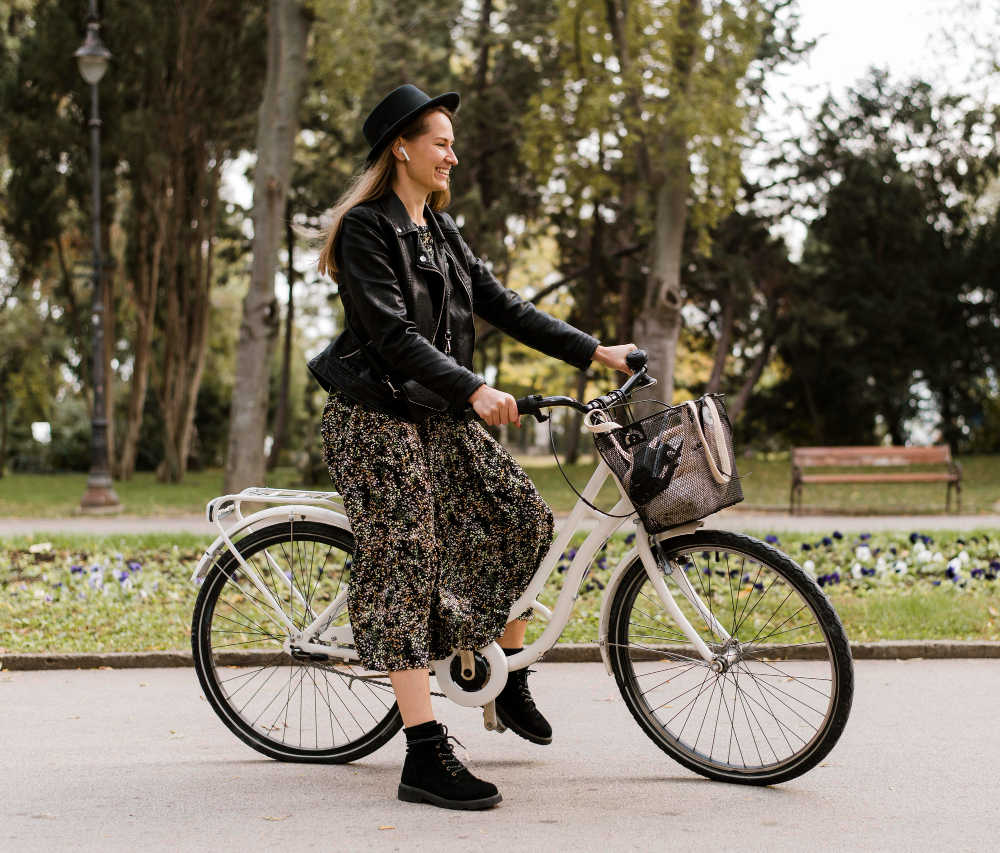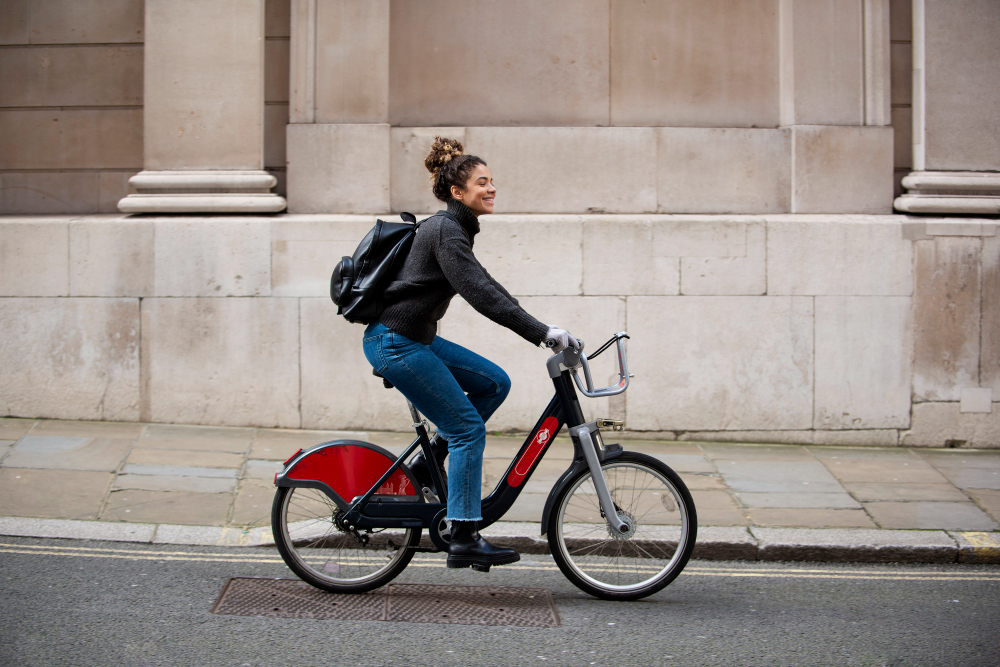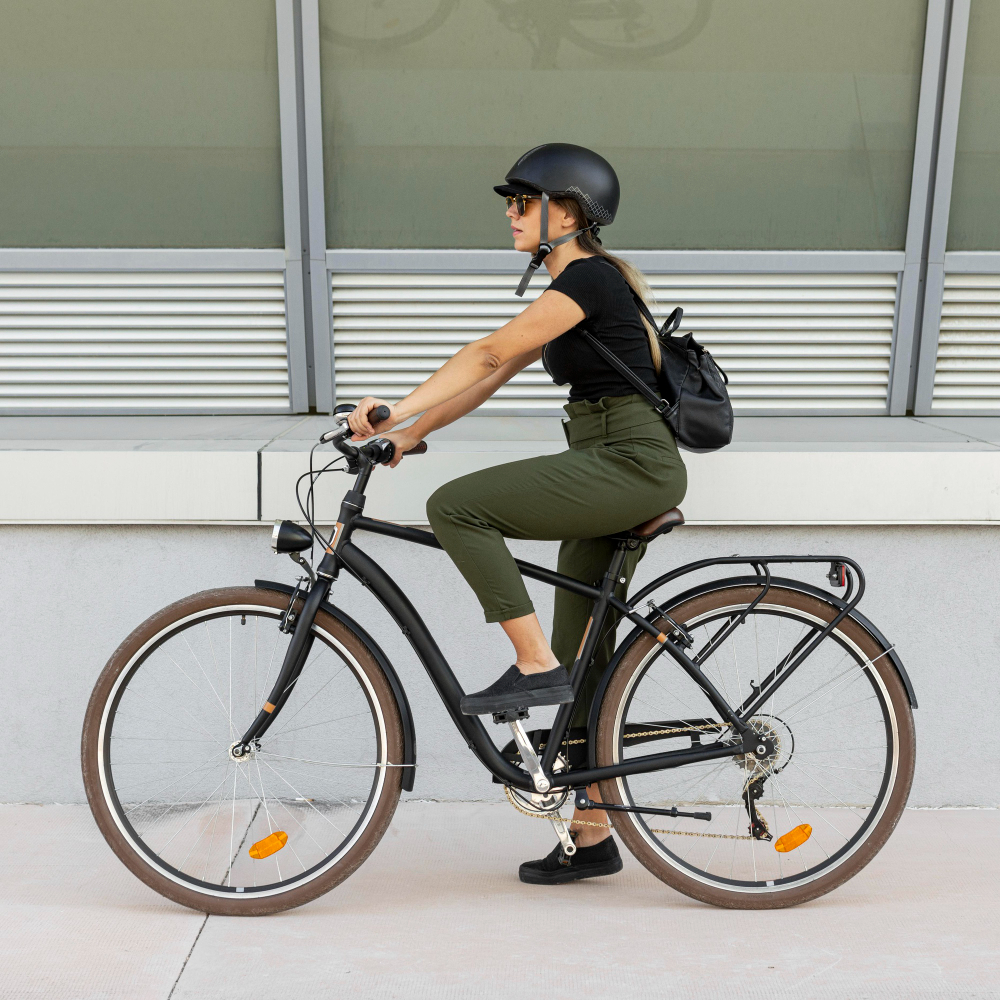A bicycle helmet is the most important piece of cycling equipment, as the quality directly affects the cyclist’s safety. A properly fitted helmet should reliably protect the head in a fall, not slip and not squeeze it. Let’s take a close look at how to choose the optimal bike helmet based on the individual characteristics and preferences of the user.
Choosing the Right Size Bike Helmet
The main rule when choosing a helmet is that it must match the size and shape of your head as closely as possible. To determine the right size, first measure the circumference of your head with a tape measure, passing it across the forehead just above the eyebrows, around the back of the head, and along the cheeks. This will help understand what “size” you need exactly.
Then refer to the size chart showing the correspondence between helmet sizes and head circumferences provided by the manufacturer. Each brand has its own sizing scale, so you need to focus specifically on the data for a particular model. Choose a helmet based on the measurements obtained.
It is also very important to try the helmet on in person to make sure you’ve chosen the right size. An ideally fitted helmet should snugly and evenly wrap around the head without causing any uncomfortable pressure or stretching feeling. Most modern models have an adjustable sizing system with straps and sliders to help achieve a maximally comfortable fit.
If the helmet is too loose and wobbly, or on the contrary squeezes too tightly in some areas, it will not be able to provide proper protection and safety in a fall or impact. Therefore, it is extremely important to take the time to choose the optimal size and achieve a perfect fit of the helmet on your head.
The health benefits of cycling also emphasize the importance of proper gear for safety and comfort during physical activity.
Choosing the Helmet Shape
There are several basic helmet shapes:
- Classic round models that suit most casual cyclists. They are versatile and comfortable.
- Oval or slightly elongated helmets, which are also quite versatile.
- Streamlined aerodynamic helmets for professional racers and triathletes. This shape reduces air resistance.
- Models for extreme disciplines like trail or enduro riding often have an extended chin portion to protect from impacts.
When choosing a helmet shape, you need to proceed from your goals and cycling style. If you only ride for fitness or leisure, a universal round helmet will be the best choice. But for competitive sports and racing, it makes sense to choose a streamlined aerodynamic model.
Evaluating Inner Padding and Comfort
In addition to the outer shape, it is equally important to pay attention to the helmet’s inner padding. Comfortable inserts and adjustable straps will help achieve a perfect fit on the head.
Good ventilation through air ducts and vents is necessary so that the head does not overheat and sweat during movement.
Also important is the presence of a rigid inner shell made of foam to disperse and absorb impact energy. The better the interior is designed, the more comfortable and safe the helmet will be to use.
Evaluating Durability and Build Quality
Safety depends a lot on the materials used and manufacturing technology of the bike helmet. The helmet shell can be made of ABS plastic or composite materials.
Solid helmets are the most durable, not detachable ones. It is also important that the impact-absorbing foam is poured inside the helmet shell, not just glued on.
Be sure to check for CPSC or CE safety certifications – this guarantees compliance with all requirements and standards. It does not pay to economize on quality and durability, as this directly affects your protection.

Choosing Optimal Ventilation and Aerodynamics
For comfortable leisurely rides, it is best to choose helmets with the maximum number of ventilation holes and channels so that the head stays cool even in hot weather.
At the same time, aerodynamic properties are more important for professional sports, so streamlined models with minimal openings are preferable here.
Or, for example, a weekend bike trip may involve different conditions, so it is important to choose a helmet that combines ventilation with a streamlined shell shape.
There are also combined helmet options that merge good ventilation with a streamlined shell shape.
Think about what is more important to you – maximum head cooling or minimal drag, and choose a helmet type accordingly.
Accounting for Helmet Weight
A helmet’s weight is another significant factor affecting comfort of use. Regular bike helmets weigh around 300-500 grams.
Very lightweight models for road cyclists can weigh about 200 grams. For children’s bike helmets, it is advisable to choose lighter options up to 300 grams.
An excessively heavy helmet will quickly tire the neck and shoulders, so with all other things being equal, it is better to opt for lighter models. But don’t forget about safety either, so a reasonable compromise is needed here.
Choosing the Optimal Visor
A bike helmet visor performs important functions of protecting the eyes from wind, dust, insects, and sunlight. For maximum sun protection, choose helmets with a large visor covering a significant portion of the face.
At the same time, a small streamlined visor is better suited for competitive disciplines, as it creates less drag.
In any case, the visor should be made of impact-resistant plastic, and also have adjustable height and tilt angle. For maximum UV protection, choose visors with a special UV filter.
Choosing Design and Color
Helmet color and design are largely a matter of the cyclist’s taste and personal preferences. Conservative dark solid color models pair well with almost any clothes and shoes.
Bright and unusual colors allow you to stand out and attract attention. For children, it is better to choose cheerful bright color schemes.
The main thing is that the helmet color is highly visible on the road to improve safety. Otherwise, personal preferences in style and image can be taken into account.
Conclusion
The main criteria when choosing a bike helmet are correct size, ideal fit on the head, and reliable impact protection. And other parameters like design, ventilation, weight, etc. are chosen based on the user’s personal preferences, cycling goals and conditions.
A competently selected helmet will become a reliable head protector and allow you to enjoy riding a bike even more!








